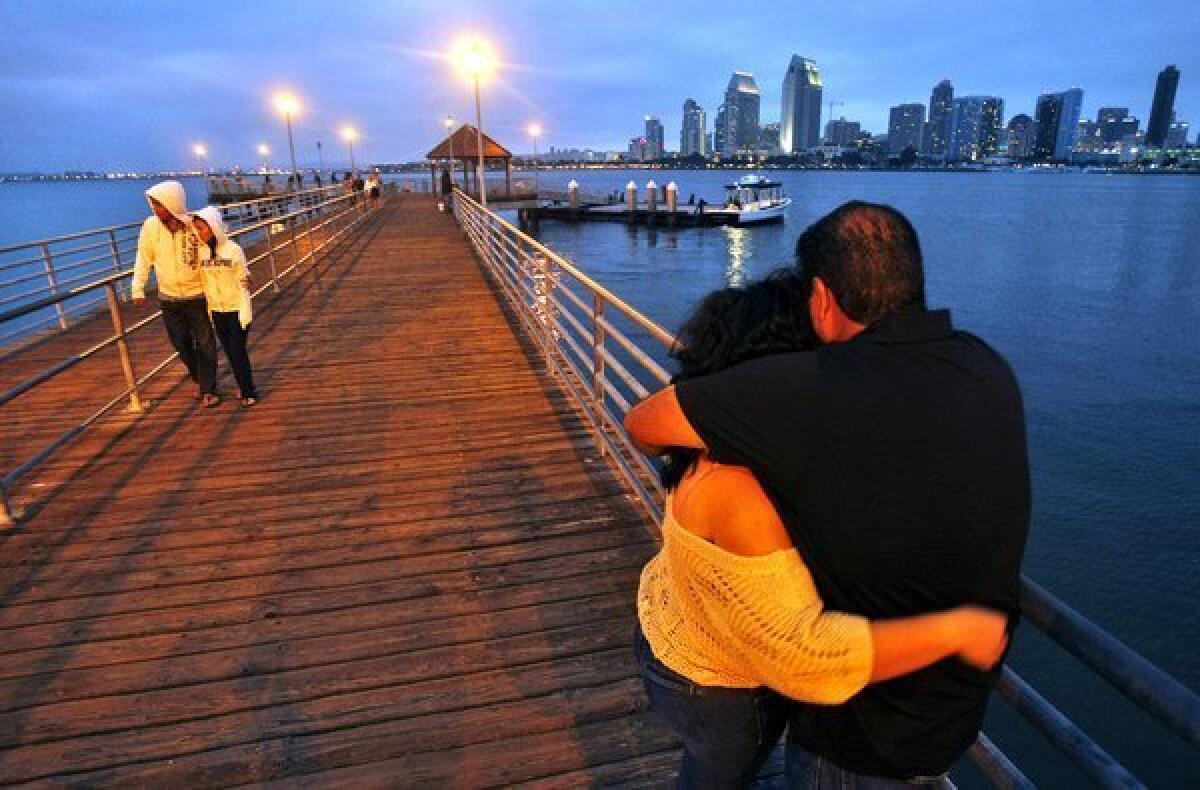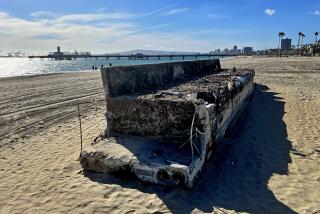California’s piers: Enjoy their primal allure

How was that little vacation you took? You remember. It cost you almost nothing, it burned some calories (or, after that ice cream cone, added a few) and briefly immersed you in quintessential California.
It was that walk on a pier, those structures that stretch out like a gateway into the Pacific. Perhaps we don’t think about them much, but they’re part of what has made California California: Piers (or wharfs as they were called in the mid-19th century) once were the primary way of moving food, cargo and travelers on and off sailing vessels. After having walked 75 of California’s finest piers in the last year and a half, I also found they were the best way to move...me.
During my jaunts up and down the coast, I skipped some of them. I didn’t do military piers (not open to the public); I eschewed commercial business piers (too dull). I ignored the un-touristed reaches of the San Francisco Bay, particularly leading back into the freshwater Sacramento Delta. And I blew off the state’s thousands of private and public boat docks (a pier has pilings, a dock has none), leaving those for some other pilgrim.
That still put me on long piers (some more than half a mile long), short piers (one only 75 feet), rickety old piers, new but sometimes boring concrete piers, solitary piers and piers jammed with fun seekers. From the end of the trim structure over Imperial Beach—from which you can see Mexico—to the charming harbor in Crescent City, which is almost to Oregon, piers increasingly seemed to me less utilitarian and more like inviting portals into the past and present.
Monterey had the first pier, which went in 1847. Then railroads began became the hot new mode of transportation, and soon train tracks were being installed near the piers to ferry goods up and down the coast. Next came the car, but most piers weren’t built to accommodate the auto. But real estate impresarios figured a way to bring newly mobile Californians to the shore by building “pleasure piers”— places bustling with dance pavilions, restaurants and arcade games. Sometimes that bait worked; sometimes it didn’t. You can see the ghosts of those failures even today.
Like the people who dreamed them, piers are perishable. Their decline can be slow, as wind and water chip away at them, or fast, brought to their knees by coastal storms, especially in the El Nino years of the ‘80s and ‘90s. Even steel and cement sometimes are no match for Mother Nature. For instance, the Aliso Creek Pier in South Laguna Beach, built in 1971, lasted barely 25 years before El Nino tore it apart in the late ‘90s.
If our piers have a guardian angel it is the California Wildlife Conservation Board. The board was created to “administer capital outlays for wildlife conservation and related public recreation” and is now in its seventh decade of working with local cities and counties to fund construction of piers, and, more recently, coordinate their restoration.
Ken Jones, whose book “Pier Fishing in California” and website (www.pierfishing.com) are the definitive guides to the California structures, notes, “In the 1960s this group helped build or renovate 16 piers in the state. And in the 1980s, after the 1983 El Niño storms hit, they worked on 18.”
Jones, who loves to fish, specifically off piers, has been a self-described “pier rat” since 1962. (He says a true pier rat “leaves the pier cleaner” than when he arrived and helps unhook birds that get snarled up in man’s detritus.)
His favorites among all that he sampled (and he has sampled all of them): “Ventura Pier, with a beautiful sunset and those islands in the background, can be great.” And “The ‘B’ Street Pier in Crescent City—that is something.”
Momentarily less pier rat and more uncrowned poet laureate of California’s piers, Jones explains their primal allure. “For me, out there at night, so still except for waves splashing against the pilings, maybe some moonlight on the water…It’s simply a special moment and place to be in the world.”
I found Jones’ special moments and places aplenty during my own wanderings. (The highlights of each pier I visited can be found at latimes.com/piers.) They were, I realized, a sort of low-cost spa treatment.
They’re also a window into nature—bird and marine life and California’s life. As you meander out on a pier, you see, for a moment, a small portrait, each, by itself, interesting. But together, they paint a picture of a state where the riches are sometimes more psychic than sensational. Staring out to sea, listening to the waves, hearing the cry of a gull, I felt complete.
More to Read
Sign up for The Wild
We’ll help you find the best places to hike, bike and run, as well as the perfect silent spots for meditation and yoga.
You may occasionally receive promotional content from the Los Angeles Times.






